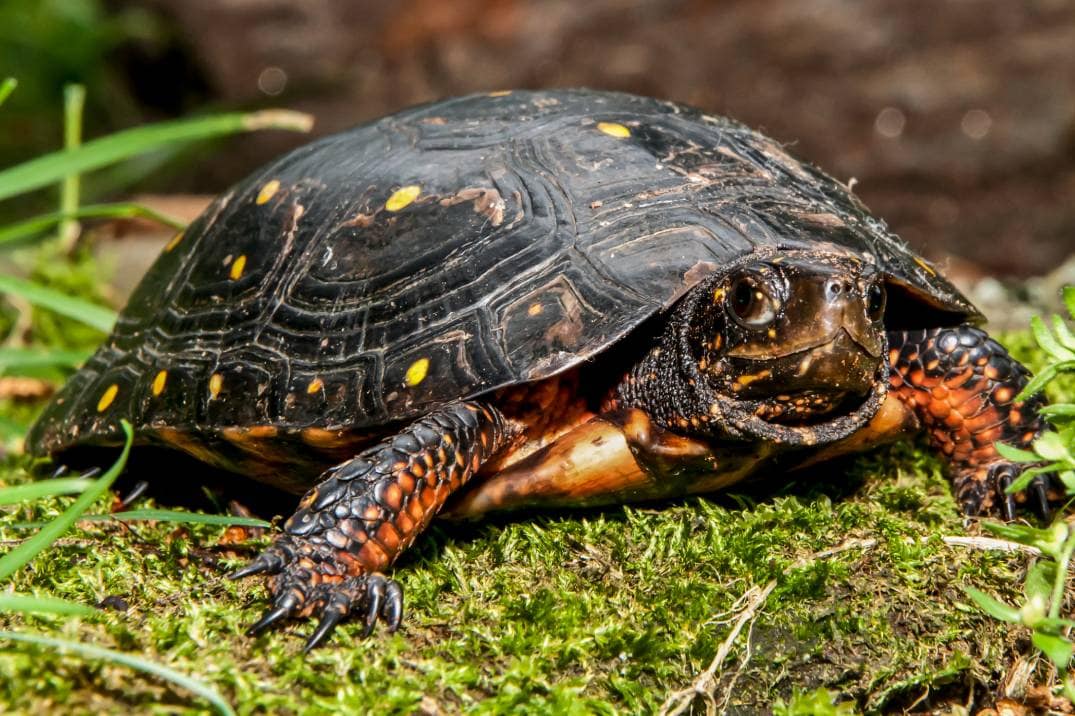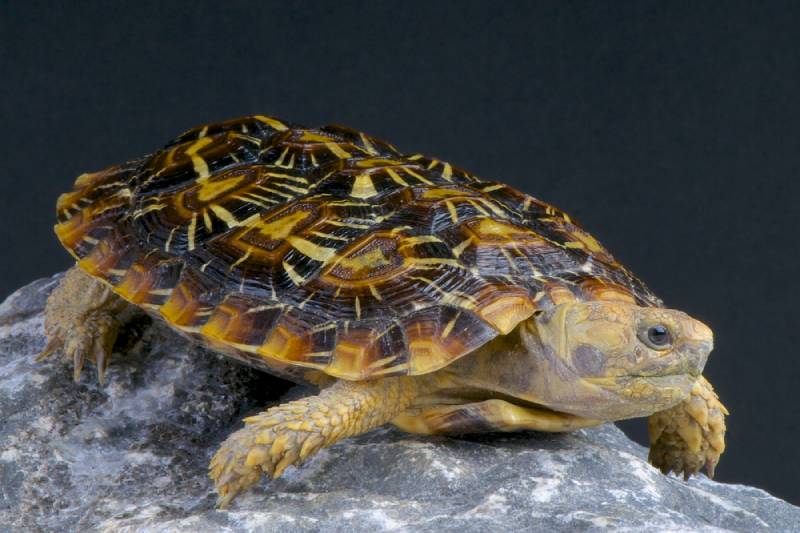How to Hatch Turtle Eggs at Home Without an Incubator: 5 Vet-Reviewed Steps
Updated on
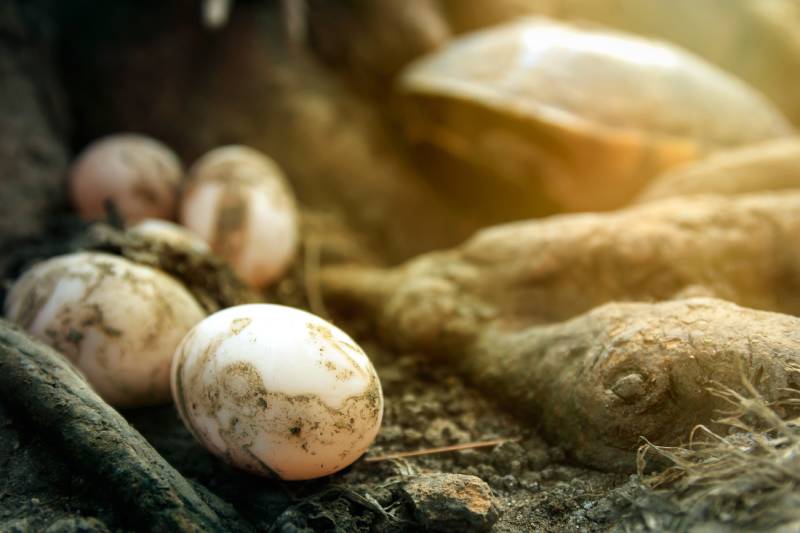
If you have found yourself in a position where you need to incubate turtle eggs, but don’t have an incubator handy, you are most certainly going to need to create a DIY incubator to increase the chances of successful hatching.
If you are breeding pet turtles, you should be prepared and have a reptile incubator on hand, as it can be difficult to have success without one. However, if you don’t have an incubator or if you have come across a wild clutch in need of saving and you’ve decided not to let nature take its course, there are some things you can do.
In this article we’ll go over step-by-step how you can hatch turtle eggs at home without an incubator. Keep in mind that your chances of success may not be too high, but it’s worth a shot and we’re here to help give you the best chance possible.
The 5 Steps on How to Hatch Turtle Eggs at Home Without an Incubator
1. Create a Nesting Site
You will need to create a nesting box for the turtle eggs so that they have a safe place to incubate. You can do this by using a wooden box, plastic container, Styrofoam cooler, or any other household item that can provide an enclosed, secure space.
The ideal nesting box for turtle eggs should be warm and humid. You will want it to have enough space to fit all the eggs and have enough room for any hatchlings to move about freely upon hatching.

2. Add a Suitable Substrate to the Nesting Box
Your nesting box is going to require the substrate to properly incubate the turtle eggs. The most highly recommended substrate options would be peat moss, vermiculite, sand, soil, or even a mixture of these.
The goal here is to make sure the eggs are cushioned safely, and the substrate can remain moist without getting too wet. Make sure it’s deep enough to cover all the eggs that need to be incubated.
3. Place the Eggs in the Substrate
Once the nesting box is all setup, you need to transfer the eggs from the laying site into the nesting box. Since turtle eggs are very delicate, you need to be very cautious and gentle when transferring.
Be careful not to change how the eggs are laying in the nesting site. This means you need to avoid rotating them and avoid changing their position or direction, as this can have a negative impact on the developing embryos.
For the best chance for a successful incubation, bury the eggs halfway into the moistened substrate.
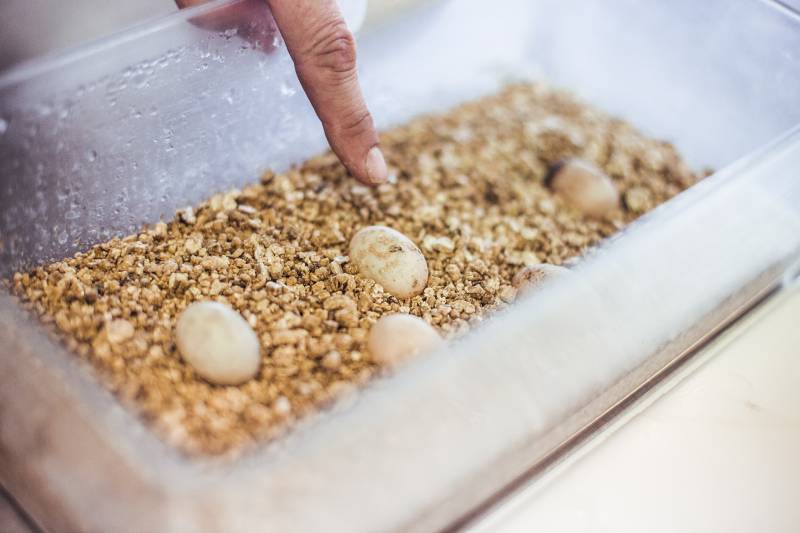
4. Create a Warm Humid Environment
Turtle eggs are going to require very specific temperature and humidity conditions to incubate properly and result in successful hatching. Keep in mind that even in nature, you are bound to have eggs that do not develop or hatch successfully.
Many turtles lay their eggs during the warmer months from May through July, depending on the species and their geographical location. The temperature to incubate should be between 80 and 85 degrees Fahrenheit and the humidity level should be kept around 80 percent.
In this case where you are not using an incubator, you should use alternate heat sources to reach the right temperature and keep track of it with a thermometer. You should also use a hygrometer to monitor the humidity. Regularly check both to ensure the eggs remain in optimal conditions.
5. Give It Time
Once you have the eggs comfortably placed within the substrate of your nesting box and you have the right balance of temperature and humidity, you need to give the eggs time to incubate.
For most species of turtle, eggs will take anywhere from 50 to 90 days or more before hatching into baby turtles. You do not want to touch or disturb the nest in any way so that you increase the chances of some successful hatching.
There’s nothing wrong with peeking in on them regularly, and be sure to keep track of both temperature and humidity because their chance of survival will decrease drastically if they aren’t kept within the correct environmental conditions.
Throughout the incubation, you do not want to disturb or touch the eggs in order to increase their chances of hatching successfully. You should just regularly check on them and ensure the temperature and humidity stays consistent.

6. Handling Hatchlings
If you are lucky enough to produce some successful hatchlings from your homemade incubator, your final step will be taking care of the brand-new baby turtles. First, you’ll need to remove the babies from the nesting area and clean them with a warm cloth before putting them in a safe, secure location.
If these hatchlings are from your pet turtle, you will need to find an appropriate terrarium or enclosure to keep them in. If these hatchlings are from a wild clutch that you were saving from a tragic fate, you will need to decide how you want to move forward. You can call a local wildlife rescue service for advice when you first start the process to get more advice.
Extra Tips for Incubating Turtle Eggs at Home
Reach Out to a Veterinarian
If your pet turtle laid the eggs you are incubating, don’t hesitate to reach out to your veterinarian for some advice on how to properly care for the eggs and hatchlings. Your vet will be able to guide you on what you need and how to best handle this type of situation from a professional standpoint.
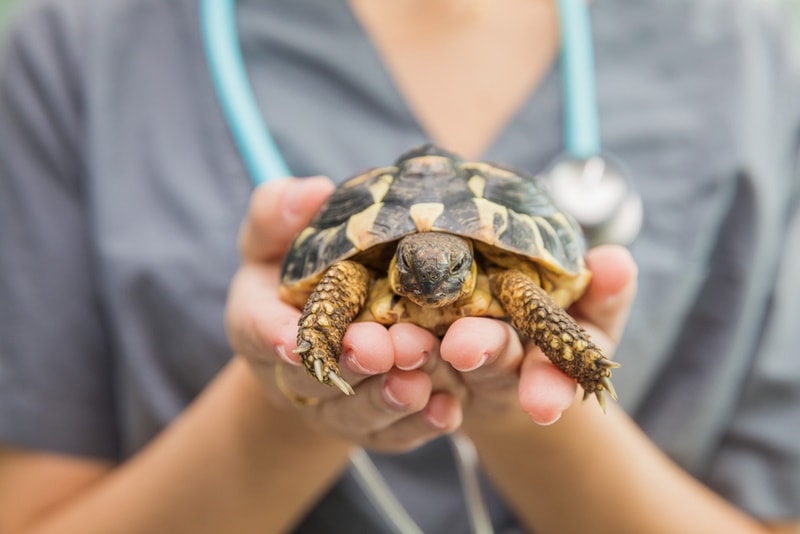
Call Local Wildlife Services as Needed
If you happen upon a clutch of wild turtle eggs that you are saving from a tragic fate, you can always reach out to local wildlife services in your area for some advice.
They may be able to help you determine what kind of species you are dealing with, be able to provide you tips on what to do with the hatchlings, and may even have services that can help with wild baby turtles.
Keep in mind that with wild turtles, you could be dealing with protected species, so make sure to understand what those species are and the laws that have been put in place for their protection.
Determine the Species (If Possible)
In the case of a pet turtle laying eggs, you won’t have any trouble knowing what species you are dealing with, which gives you the upper hand in knowing more about their natural environment, average incubation period, and care requirements. However, if you find wild turtle eggs that you are trying to save, you may not have the luxury of knowing what you’re dealing with.
If you’ve found wild turtle eggs, make sure to research the species that are endemic to your area and try to narrow down which species laid the eggs. This may not always be possible, but it’s a good way to understand more about what to expect with incubation periods and what to do with any surviving hatchlings.
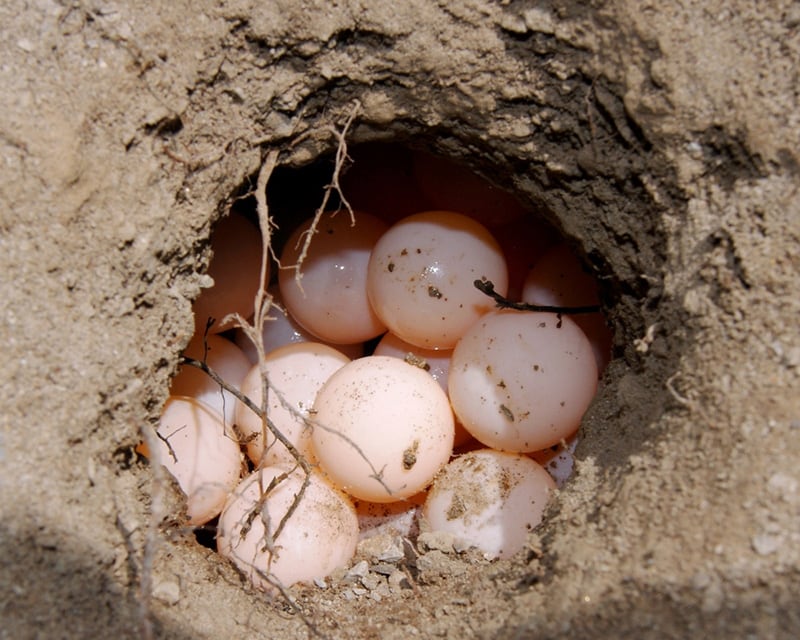
Conclusion
You can incubate turtle eggs at home without an incubator, but you will need to set up ideal conditions for the eggs to incubate on their own. This includes a proper nesting box, moist substrate, and ideal temperature and humidity during the incubation period. It’s normal to have eggs that fail to successfully hatch, but always reach out to a veterinarian or local wildlife services if you have any questions or concerns.
Featured Image Credit: SunsetPaper, Shutterstock


